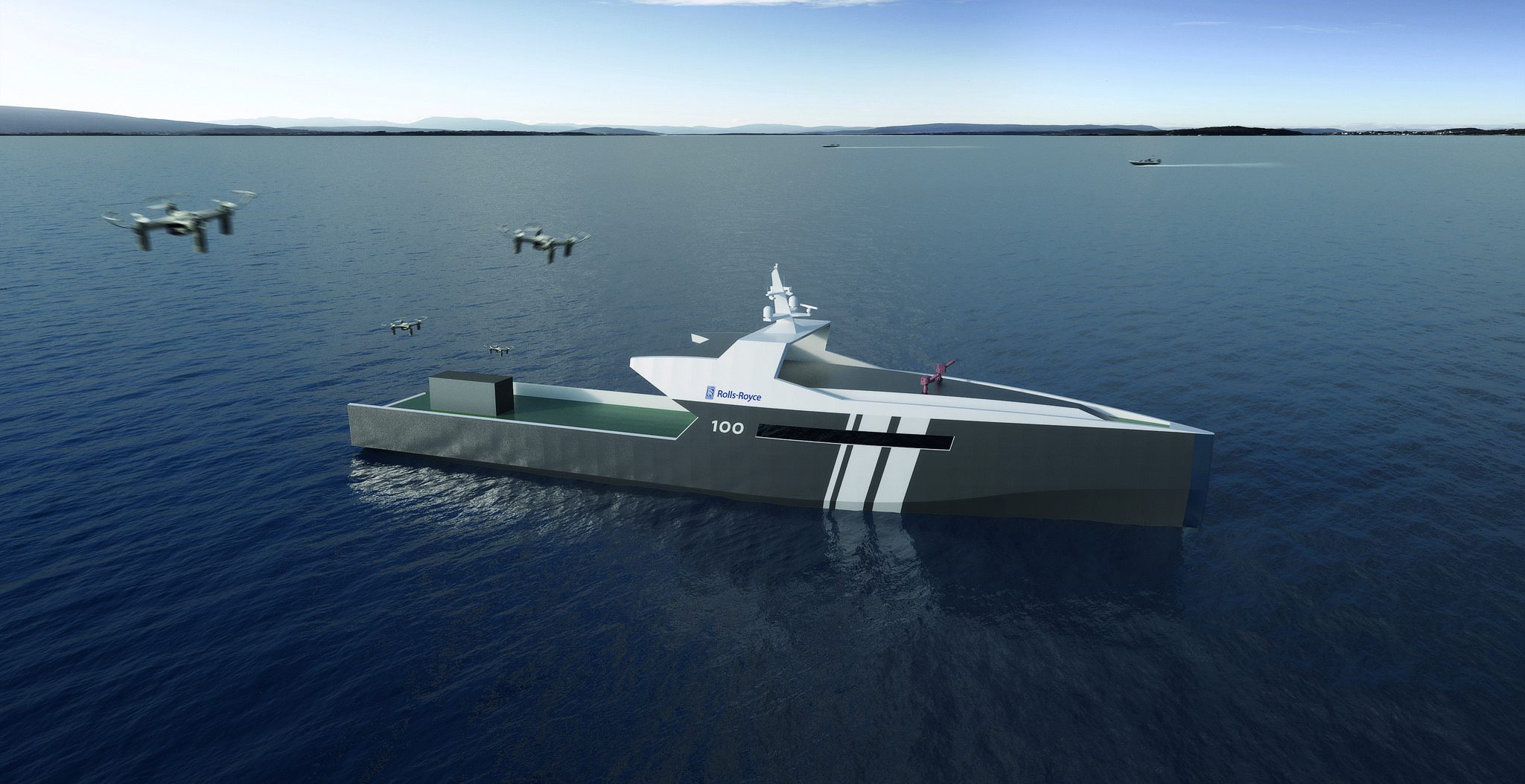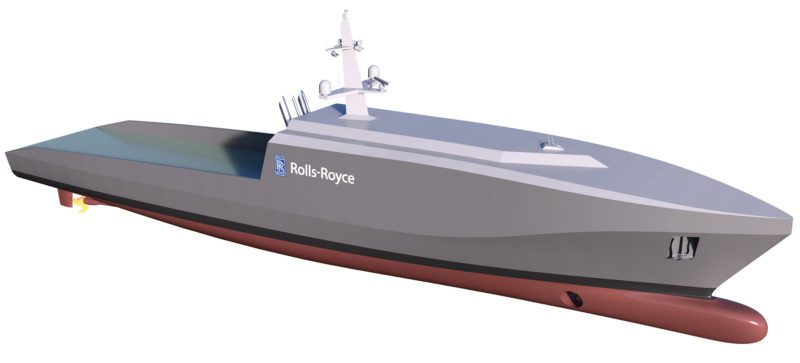India’s Oil Demand Drives CMB Tech Fleet Diversification
By Dimitri Rhodes Nov 7 (Reuters) – Belgian oil tanker company CMB Tech says it will focus on the fast growing market in India as it reported third quarter results...


Illustration courtesy Rolls-Royce Plc
Rolls-Royce has unveiled plans for an autonomous naval vessel that it will market to international navies as interest from the naval sector increases.
Rolls-Royce says the autonomous vessel will have a range 3,500 nautical miles and is designed for single-role missions such as patrol & surveillance, mine detection, and fleet screening. The fully-electric concept vessel is capable of operating beyond the horizon for over 100 days and will displace 700 tonnes and reach speeds above 25 knots.
“Rolls-Royce is seeing interest from major navies in autonomous, rather than remote controlled, ships,” according to Benjamin Thorp, Rolls-Royce, General Manager Naval Electrics, Automation and Control. “Such ships offer a way to deliver increased operational capability, reduce the risk to crew and cut both operating and build costs.”
For the naval concept, the vessel will feature a fully electric propulsion system, requiring fewer auxiliary systems and offering more reliability than mechanical counterparts. The concept has two Rolls-Royce MTU 4000 Series gensets providing around 4MW electrical power to a 1.5MW propulsion drive, and permanent Magnet Azipull thrusters with a bow-mounted thruster for high maneuverability. To reduce fuel consumption and extend operational range, solar panels and an additional 3000 kWh of energy storage to be used during low-speed standby operations.


In recent years Rolls-Royce has positioned itself at the forefront of the development of autonomous and unmanned ships within the commercial sector. But due to ever-increasing pressure on defense budgets, Rolls-Royce says international navies have also taken notice of unmanned technology as a possible route to reducing with costs associated with crew. The removal of manpower will also radically change naval ship design, making vessels smaller and bringing immediate cost savings.
Yet Rolls-Royce acknowledges that the absence of crew increases the need for very reliable power and propulsion systems. To combat the issue, Rolls-Royce has created what it believes to be the world’s first Intelligent Awareness System, combining multiple sensors with Artificial Intelligence and system redundancy. A suite of autonomous support tools, developed by Rolls-Royce, will help with Energy Management, Equipment Health Monitoring and predictive and remote maintenance.
“The operational profile of these platforms will be more complicated than commercial unmanned vessels,” says Thorp. “They will be expected to sail from A to B on patrol, avoiding ships and other navigational hazards. At some point between A and B, they will detect something, maybe a submarine, and the mission will change to tracking and surveillance. The power and propulsion system will then need to adopt an ultra-quiet mode to avoid detection.”


“Over the next 10 years or so, Rolls-Royce expects to see the introduction of medium sized unmanned platforms, particularly in leading navies, as the concept of mixed manned and unmanned fleets develops. With our experience and capabilities we expect to lead the field,” Thorp said.
Join the gCaptain Club for curated content, insider opinions, and vibrant community discussions.


Join the 110,264 members that receive our newsletter.
Have a news tip? Let us know.
Access exclusive insights, engage in vibrant discussions, and gain perspectives from our CEO.
Sign Up




Maritime and offshore news trusted by our 110,264 members delivered daily straight to your inbox.



Essential news coupled with the finest maritime content sourced from across the globe.
Sign Up